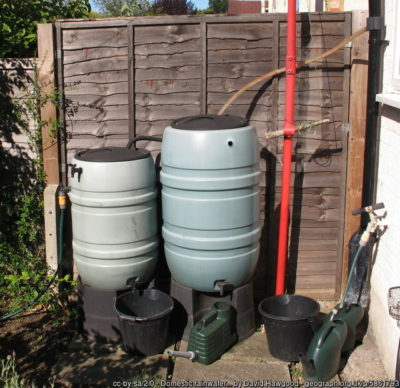As part of our COP26 coverage and the #OneStepGreener campaign, Hull CC News looks at the work that has been done since 2007 to protect the city from the threat of flooding, and what you can do to improve your own resilience…
With its proud maritime history and an emerging status as the UK’s ‘Energy Estuary’, Kingston upon Hull is a city whose past, present and future are built around water.
Unfortunately, with this comes the inescapable truth that, after London, Hull is the UK city most vulnerable to the potentially catastrophic effects of flooding, with around 100,000 homes at risk across East Yorkshire.
Hull is acutely exposed to this threat because of its location, sitting on both the Humber estuary and the River Hull, as well as its proximity to the North Sea. To add to the problem, the city sits in a flat-bottomed basin of low-lying land below sea level.
With COP26, the United Nations Climate Change conference, currently taking place in Glasgow, much of the debate has understandably focused on efforts to slow the pace of climate change. And while it’s vital that we work towards the goal of ‘Net Zero’, it is also important to remember that we cannot stop climate change altogether, or completely remove the risk of flooding. We must understand the threat and learn to adapt and build our resilience so we can continue to live with water.
Living with Water
The devastation suffered by Hull and the East Riding in the floods of 2007, and the tidal surge of December 2013, led to the creation of Living With Water, a partnership between Hull City Council, Yorkshire Water, East Riding of Yorkshire Council, the Environment Agency and the University of Hull – all of which are involved in managing water in the region.
LWW works to protect the area by developing innovative water management systems, as well as giving people the knowledge to improve their personal resilience.
Learn about Living with Water’s Blue-Green Vision:
What has been done since 2007?
Through the Living with Water partnership, Hull has become a leading authority on flood management, with more than £220m spent on flood infrastructure between 2015 and 2021. These projects include:
Haltemprice surface water storage schemes: There are three major surface water storage schemes in the Hull and Haltemprice area. These versatile green spaces hold excess water after heavy rainfall and release it gradually to slow the flow into the drainage system. Between them, they are expected to reduce the likelihood of severe surface water flooding for around 20,000 properties. As one of the country’s largest surface water storage schemes, this innovative development sets an example of how to manage surface water sustainably.
Humber: Hull Frontages: This £42m scheme built new flood defences and upgraded existing tidal defences to reduce flood risk along the Humber estuary. It is one of the biggest flood defence schemes in the country and is expected to reduce tidal flood risk for 113,000 properties. The work was completed in March 2021.
Hull Tidal Surge Barrier refurbishment: The Hull Tidal Surge Barrier protects the city and the surrounding villages from flooding caused by storm surges flowing back up the River Hull. It protects around 17,000 homes and business. In 2009-10, in response to increased flooding, rising sea levels and more severe weather, the barrier underwent a £10m refurbishment, adding new control features and improved computer control.
See the tidal barrier in action:
River Hull Defences Improvement Scheme: In 2012, the Environment Agency began assessing the River Hull defences, from the Humber Tidal Barrier to Clough Road on the outskirts of the city centre. Between 2017 and 2021, defence works have been carried out across 62 sites. The defences cover 3.5km of the banks of the river.
Sustainable drainage systems (SuDS): Several SuDS projects are being planned to help manage flood risk in Hull and the East Riding. When it rains heavily, water runs off hard surfaces, such as buildings, roads and pavements, and into drainage and sewer systems, which not always large enough to cope. Sustainable drainage systems (SuDS) act in a similar way to natural water processes, slowing the water flow and channelling it away from drains and sewers. As well as managing flood risk, SuDS also help reduce pollution and enhance biodiversity.
What can I do?
While defences reduce the probability of a flood, they can never remove the risk entirely. It is just as important for everyone to work on their own personal resilience, particularly in a city as vulnerable as Hull.

Rachel Glossop, flood risk manager at Hull City Council, says: “Hull has a high level of flood risk, and we all have a role to play in managing that risk. As Risk Management Authorities, [the LWW partners] have invested in flood infrastructure such as defences, walls and pumping stations, which reduce the probability of flooding.
“However, there is an increased risk of flooding from the changing climate in respect of localised flash flooding and intense storms, which are hard to predict and extremely difficult to manage. This is why it is important for everyone to be aware of this risk and to take steps to manage it.”
As part of its Be Flood Aware campaign, Living with Water recommends three simple steps that individuals can take to improve their personal resilience, which it calls “Flood CPR”:
Check: Find out what causes flooding, whether you’re at risk, and how it can get into your home.
Plan: Plan and prepare ways to protect your home and what to do during a flood.
Register: Sign up for flood alerts via phone, email or text message.
Rachel says: “These are small steps, but if everyone takes them, it will make a big difference to the way the city faces the challenges of climate change.”
A flood strategy for the future
As the Lead Local Flood Authority, Hull City Council produces a Local Flood Risk Management Strategy (LFRMS) every six years. The strategy aims to increase flood awareness and resilience among people, communities and businesses living, working and visiting Hull.
The LFRMS for 2021-2027 sets out the local authority’s plans to identify and manage flood risk over the next six years, working with the Living with Water partnership.
The strategy also suggests ways in which can improve their own flood awareness and resilience, and encourages people to get involved in community and educational events through Living with Water.
Public consultation on the strategy continues until Friday 19 November. Have your say here
For more information on flood resilience, follow the links below:




